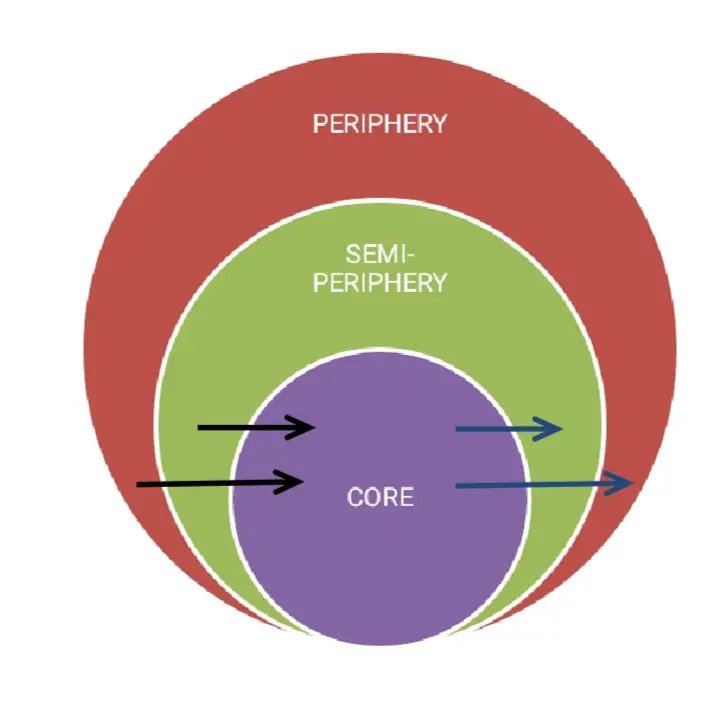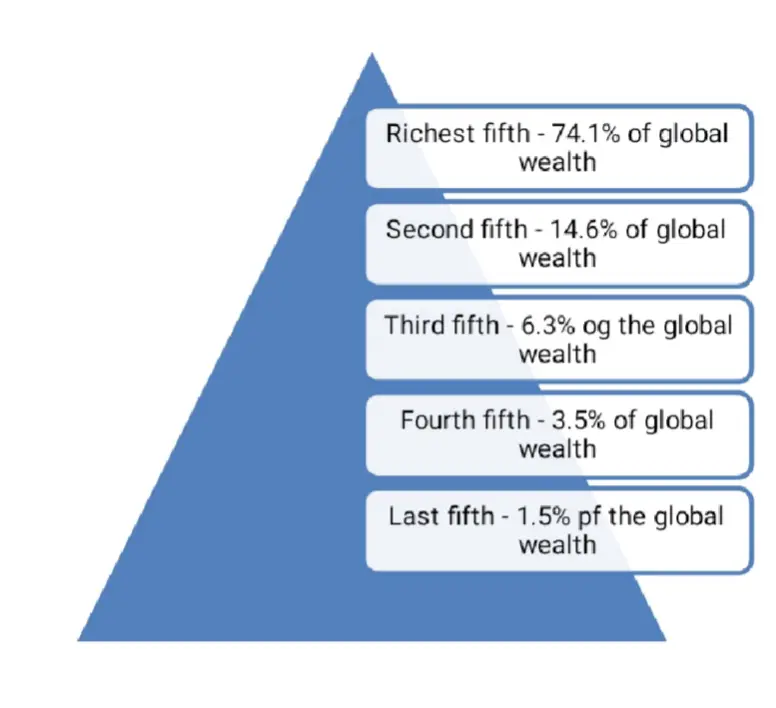Before we dive straight into the relevance of Neo-Marxism in the postmodern world, we need to understand the postmodern world and Neo-Marxism. Hence, we start with some background on the two subjects and then proceed to check for the relevance of Neo-Marxist ideologies in the postmodern world.
What is a postmodern world?
Though the ideas of postmodernism can be seen emerging in the mid of 20th century, we see its prominence since the 1960s and the 1970s. As the term suggests, postmodernism goes beyond the narratives of modernism. In the ‘Modern World’ we had strict nation-states divisions and everything was state-centric. On the other hand, the ‘Postmodern World’ went beyond states, in this period, the world was not just surrounding the nation-states, but also the non-state actors. Not just the state but many other actors or institutions played their part to shape the county and world politics. These actors or institutions include Multi-National Companies, the involvement of poor countries, women and many others.
According to Postmodern scholars, the idea of a nation-state is abstract. There is no such thing as a nation-state and hence there is no national interest. They believe that the state is declining. Though it still holds its position, it is just one of the many actors. In the postmodern world, an individual is seen as equal to that of a state. The idea of Power is also unique according to postmodern scholars. They believe that power is not just tangible possessions but also in the form of ideas, norms and words.
The scholars of this era and theory also believe the foreign policies and international relations are complex, irrational, unpredictable, and thus unmanageable. This is because the International System is much complex than it was earlier due to the influence of multiple actors rather than just states. In Real International Relations, to be more precise, in the real world scenarios, we are unable to utilise the usual International Relations Laws or Theories. It is believed that there is a need to move towards Synergetic or simply, the science that studies the behaviour of complex systems.
Hence, this era began to question the rationale of International Relations as a Science.
What is Neo-Marxism?
Let us now try to understand the concept of Neo-Marxism.
Neo-Marxism is a theory developed by Western scholars like Immanuel Wallerstein, Antonio Gramsci, Andre Gunder Frank, Robert Cox and Johan Gultang during the mid and the second half of the 20th century. This theory was developed in response to the growing changes post-industrialization. This theory has managed to incorporate the changes that came in the 20th century. This theory also tried to respond to the unlikely probability of the world socialist revolution. Yet, it still retains the principles of Marxism like economic determinism, inequality, and exploitation. The one aspect that both Marxism and Neo-Marxism come together is the idea that humanity is unequal.
The profound difference between Marxism and Neo-Marxism is the degree of their subject in the study. To be more precise, in Marxism, the exploiters and the exploited are in terms of individuals like the owner and the labourer. In the case of Neo-Marxism, the exploiter and the exploited are in terms of the nation-states. The credit goes to the Neo-Marxist scholars for dividing the world into the Global South or the Global North, developing and the developed world, or the third world or the first world countries. To them, it was irrelevant if the countries were democracies or authoritarians. All that mattered for them is if the countries were capitalist or communist, developed or developing, or advanced or not advanced.
The realists believe that foreign policies are based on national interests and the liberals believe that these policies are out of consideration to common good and morale. According to Neo-Marxist, foreign policies are developed based on the interests of the group of exploiters or the developed and the group of exploited and the developing. To understand this, we look at the Wallerstein and the World Theory System.
Wallerstein and the World Theory System
The world theory system divides the world based on the economic division of the labour. According to this, the nation-states of the world either fall under the category of developing or developed. The system believes in many cultural and political systems co-existing but all participate in the single system of division of labour. The following diagram helps understand the structure better.

RESOURCE INFLOW
FINISHED GOODS OUTFLOW
Core – The safe place resided by the developed countries (North America, Western Europe, and others). Countries here control most of the international relations and they make sure they are profited by the structure.
Semi-periphery – The countries here are in the intermediate stage, they are developing to be move towards the core (Asian Tigers, BRICS nations and others). Though countries in this region want to change the course of the present-day international relations, they try doing it by exploiting the periphery nations and pushing themselves out of the semi-periphery region.
Periphery – The countries in this region are the most exploited and least developed (Latin America, Sub-Saharan Africa, West Asia and more). The countries in this region try to break free from poverty and develop.
In the above system, the developed or exploiting countries are united in their interests to exploit the developing countries. They want to keep their status quo and hence play unfair rules in the game of the world economy. They do not want to change the pattern to avoid the addition of competitors. On the other hand, the developing or the exploited countries want to change their status quo. Get rid of the unfair and asymmetric terms of the relations. Unfortunately, these countries have different ways of reaching this goal. Hence, it is difficult for them to stay united.
Relevance
The Neo-Marxist narratives are very important to the postmodern era since we have still not come over the inequality and exploitation that exists in society.

The above pyramid shows the distribution of global wealth among the global population when divided into five parts. This also shows the extent of global inequality existing in the world.
According to the Neo-Marxists, and as earlier mentioned, the rules of the game of world economy and economic policies are unfair. The purpose of the rich countries to continue to keep the system is to prevent rapid economic and political development in developing countries.
The instruments used by the developed countries to maintain this system are –
· Foreign Aid – This according to the Neo-Marxists is to keep tap of the politics of the country being aided.
· Foreign Trade – A means to utilise the more populated developing countries as markets and to exploit the natural resources of these regions.
· Foreign Sanctions – A means to develop sanctions that help run the unfair system.
It is also necessary to understand that the countries aided and supported by the core countries are not always the vulnerable countries but the countries that are interested and vested in the ideas of the donor country. For example, the USA aiding largely to Israel a rather well-developed nation, the UK aides to its former colonies, China to the countries which can fulfill its natural resources needs (countries in Africa), and many more. From the examples, we can see that aid or help lent are not according to the interest of the recipient countries but the donor countries.
Therefore, despite moving forward from the industrialization era which initially led to the development of Marxism, we still see its relevance to date. Neo-Marxism is Marxism that adapts to the present world scenarios with the same goal, equality in humanity. The globalization and increased pace of development is surely pushing us towards a better world but at the cost of a few nations. These nations resonate with the ideas of Neo-Marxism, keeping it alive and bringing its relevance to the postmodern world.
Also Read: What does Neo mean?
REFERENCES
Baylis, J., Owens, P., and Smith, S. (2017). The Globalisation of the World Politics: An Introduction to International Relations. Oxford University Press.
Gilpin, R. (2016). The political Economy of International Relations. Princeton University Press.
Jarvis, D. S. (2000). International Relations and the Challenge of Postmodernism: Defending the Discipline. University of South Carolina Press.
Linklater, A. (1990). Beyond Realism and Marxism: Critical Theory and International Relations. Springer.
Van der Pijl, K. (1998). Transnational Classes and International Relations Psychology Press.
